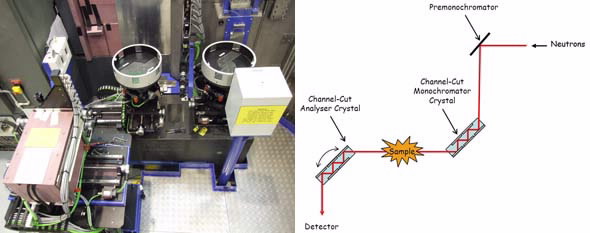ANSTO’s Bragg Institute has received approval to commence neutron beam testing of Kookaburra, allowing for the operation of Australia’s newest ultra-small-angle neutron scattering (USANS) instrument.
 |
| Neutrons channelled through the Kookaburra instrument will assist researchers studying the structures of an array of samples at the atomic scale, including food, bacteria and blood |
The new instrument will allow scientists to “see the unseeable” or provide insights into the make-up of a wide range of materials as small as one-thousandth of a millimeter by using neutrons to penetrate into their structures.
Kookaburra is the 11th neutron beam instrument at ANSTO. It will significantly extend the technical capabilities of scientists using neutrons to probe the structures of a huge array of molecular structures in things as diverse as bacteria, blood, cements, clays, clusters in metals, coals, colloids, complex fluids, emulsions, foams, food, gels, granular materials, hydrogels, membranes, minerals, nanocomposites, polymers, porous materials, powders, precipitates, proteins and rocks.
Kookaburra has been the project of the Bragg Institute’s instrument scientist Christine Rehm and the team of engineers and technicians who have designed, procured and installed all of the components.
Kookaburra is expected to enhance the reputation of the Bragg Institute as one of the world’s leading research organisations in the field of neutron scattering, which was the subject of the 1994 Nobel Prize for Physics.


